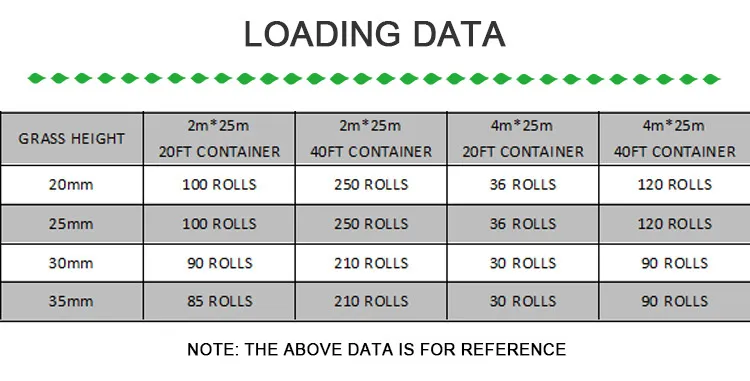
- Afrikaans
- Arabic
- Belarusian
- Bengali
- Czech
- Danish
- Dutch
- English
- Esperanto
- Estonian
- Finnish
- French
- German
- Greek
- Hindi
- Hungarian
- Icelandic
- Indonesian
- irish
- Italian
- Japanese
- kazakh
- Rwandese
- Korean
- Kyrgyz
- Lao
- Latin
- Latvian
- Malay
- Mongolian
- Myanmar
- Norwegian
- Persian
- Polish
- Portuguese
- Romanian
- Russian
- Serbian
- Spanish
- Swedish
- Tagalog
- Tajik
- Thai
- Turkish
- Turkmen
- Ukrainian
- Urdu
- Uighur
- Uzbek
- Vietnamese
Eco-friendly Artificial Grass for Sustainable Landscaping Solutions and Environmental Benefits
Nov . 10, 2024 15:25 Back to list
Sustainable Artificial Grass A Greener Future for Landscaping
In recent years, the demand for landscaping solutions that are environmentally friendly, low maintenance, and aesthetically pleasing has surged. One such solution that has captured the attention of homeowners, landscapers, and environmentalists alike is sustainable artificial grass. This innovation not only addresses the need for reliable turf but also contributes to sustainability efforts by minimizing water usage, reducing chemical runoff, and promoting a greener lifestyle.
Understanding Sustainable Artificial Grass
Sustainable artificial grass is designed with eco-friendly materials and processes to minimize its environmental impact. Unlike traditional artificial grass, which may use harmful chemicals and non-biodegradable materials, sustainable options often incorporate recycled or recyclable components. These new products can consist of recycled plastics and other materials manufactured utilizing environmentally friendly practices. Furthermore, leading manufacturers are beginning to explore bio-based options, which promise to enhance sustainability by using renewable resources.
Water Conservation
One of the most significant advantages of opting for sustainable artificial grass is the drastic reduction in water consumption. In many regions, maintaining a natural lawn requires excessive amounts of water, particularly in arid areas where drought conditions are prevalent. According to estimates, natural lawns can consume up to 56 gallons of water per square foot annually, a figure that is unsustainable in the face of climate change. In contrast, sustainable artificial grass requires no watering and can maintain its vibrant look regardless of the season. This shift not only conserves precious water resources but also alleviates the strain on municipal water systems, contributing to fewer restrictions and reduced water bills for homeowners.
Reduction of Pesticides and Fertilizers
sustainable artificial grass

Another environmental benefit of sustainable artificial grass is its potential to eliminate the need for chemical treatments. Traditional lawns often require fertilizers and pesticides to maintain their lush appearance, which can lead to significant chemical runoff into local waterways. This runoff can contaminate drinking water sources, harm aquatic life, and contribute to larger issues like algal blooms. Sustainable artificial grass, on the other hand, does not require these treatments, thereby reducing the risk of chemical pollution. Homeowners can enjoy a safer, chemical-free environment for their families and pets while also aiding in the protection of the local ecosystem.
Durability and Longevity
When investing in landscaping, durability and maintenance must be considered. Sustainable artificial grass is engineered to withstand various weather conditions, making it a long-lasting choice that can endure harsh sunlight, heavy rains, and even snow. In fact, high-quality synthetic turf can last up to 15 to 25 years with minimal maintenance, significantly outperforming natural grass in terms of life span. This durability means fewer replacements and repairs, leading to savings in both time and money.
Aesthetic Appeal
Beyond the environmental benefits, sustainable artificial grass offers undeniable aesthetic advantages. It provides a consistent, lush green look throughout the year, free from the brown spots and patchiness that can characterize natural lawns. With advancements in technology, many sustainable turf products even mimic the texture and appearance of real grass, ensuring that homeowners do not have to sacrifice beauty for sustainability.
Conclusion
Sustainable artificial grass emerges as a promising solution in today's quest for environmentally responsible landscaping practices. By conserving water, eliminating harmful chemicals, and offering durable, aesthetically pleasing options, it addresses many of the pressing environmental challenges we face. Whether it's for residential yards, public parks, or commercial properties, adopting sustainable artificial grass can help create a greener, healthier planet for future generations. As awareness of these benefits continues to grow, the shift towards sustainable landscaping solutions will undoubtedly play a crucial role in advancing our collective commitment to environmental stewardship. Ultimately, sustainable artificial grass stands out as not only a practical choice but also a vital step towards a more sustainable future.
-
The Benefits of Artificial Turf for Indoors
NewsJul.15,2025
-
How Artificial Grass Suppliers Ensure Quality Products
NewsJul.15,2025
-
Artificial Grass and Pets: A Space for Relaxation
NewsJul.08,2025
-
Balcony & Outdoor Decoration with Artificial Grass
NewsJul.08,2025
-
Best Indoor Artificial Grass for Home
NewsJul.07,2025
-
Best Pet Turf for Dogs: Safe & Durable Artificial Grass Options
NewsJul.07,2025
Products categories









